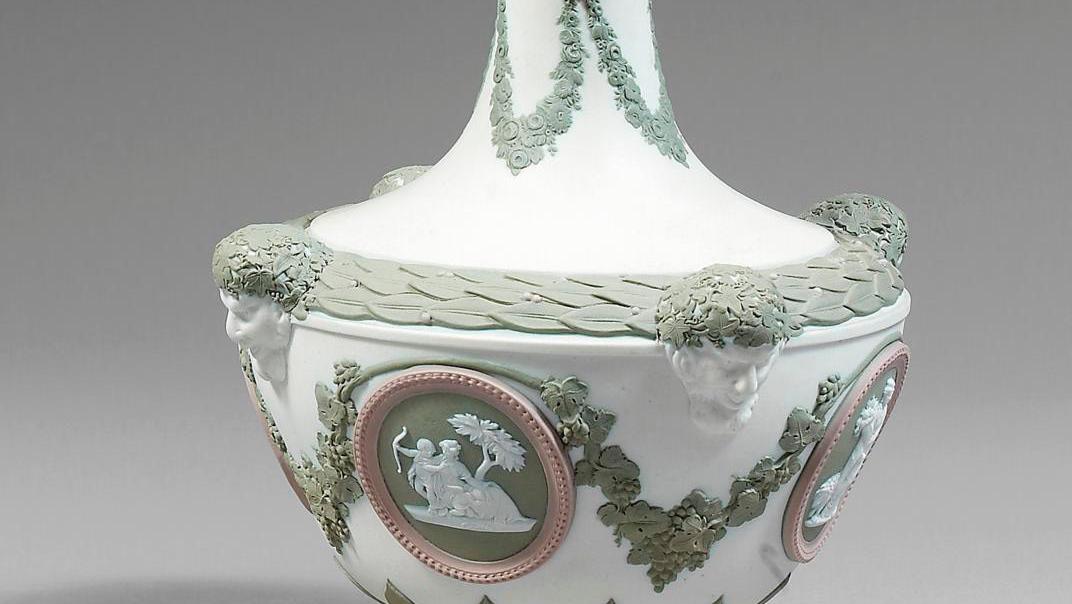In the space of a few years, Josiah Wedgwood managed to combine innovation, industry and craftsmanship. His work is still the quintessence of British Neoclassicism.
Wedgwood, 19th century, covered vase with narrow neck and pedestal, h. 26 cm/10.24 in.
Paris, Hôtel Drouot, February 10, 2010. Beaussant - Lefèvre & Associés OVV. Mr. Vandermeersch.
Result: €800
Ironically, a weakened knee left Josiah Wedgwood (1730-1795) unable to finish his potter’s apprenticeship with his brother in the town of Burslem, Stoke-on-Trent. Noting the poor quality of the clay in his home county of Staffordshire, in 1754 he began experimenting with new types of material. Five years later, he joined forces with a potter and developed a refined green glaze to decorate rococo tableware with trompe l'œil fruits or vegetables. However, his obsession was the imitation of porcelain . After many experiments, in 1763 he developed creamware, a fine, cream‑colored earthenware. Queen Charlotte liked the new pottery so much that in 1765 she allowed Wedgwood to call it Queen’s Ware. This opened the door to an aristocratic clientele, which set the tone for all of British society. As…
com.dsi.gazette.Article : 38406
This article is for subscribers only
You still have 85% left to read.
